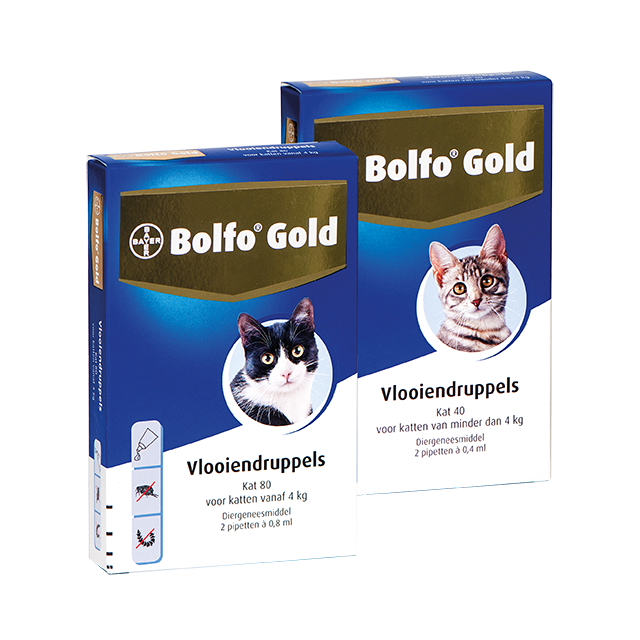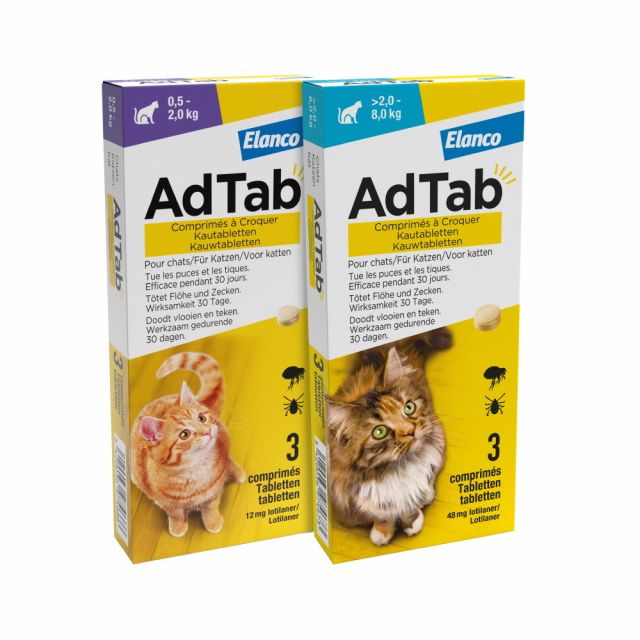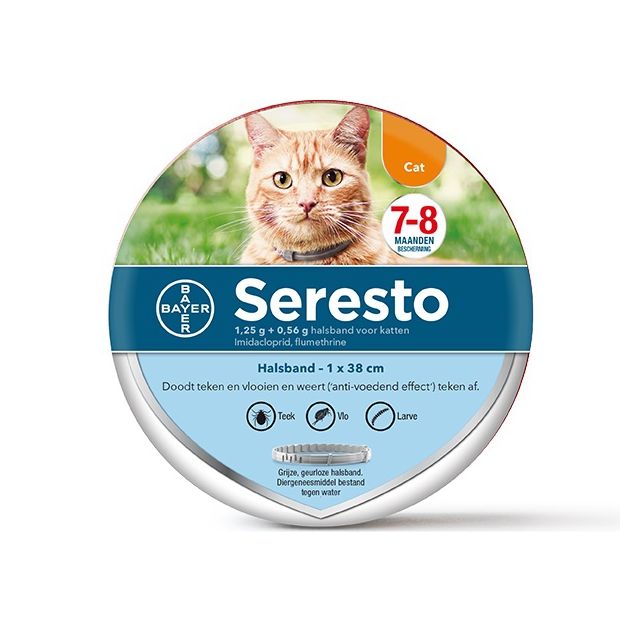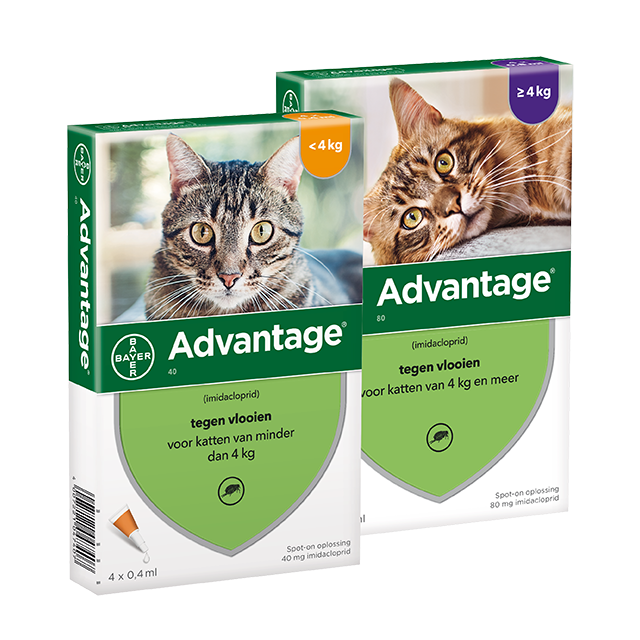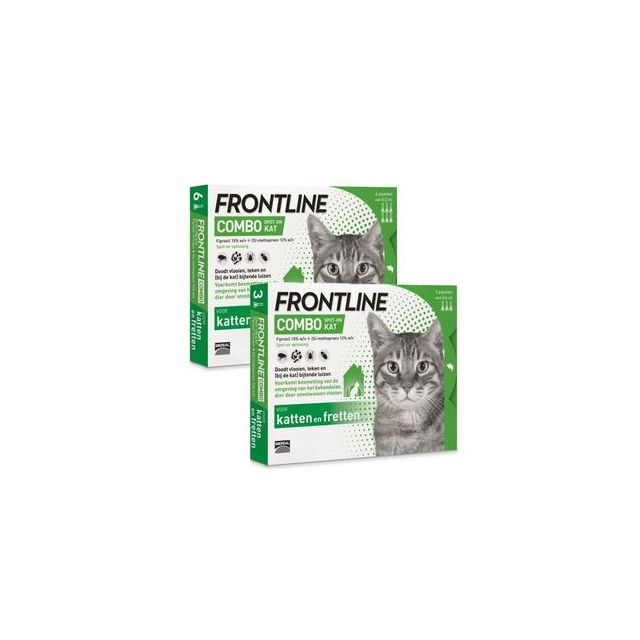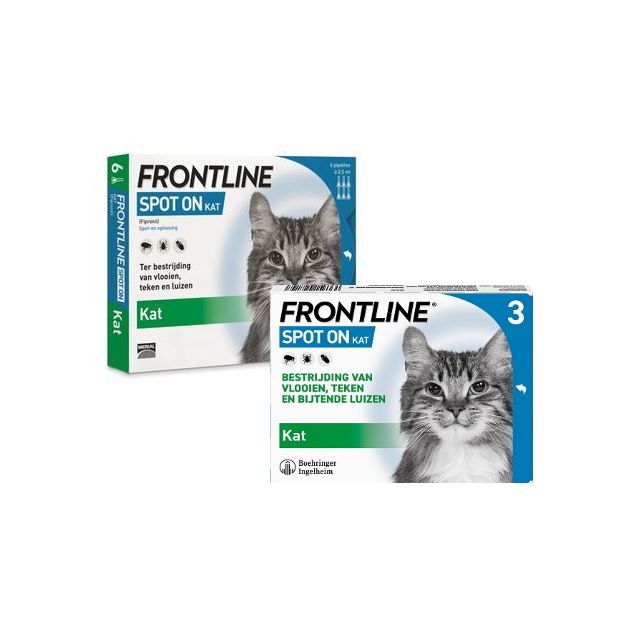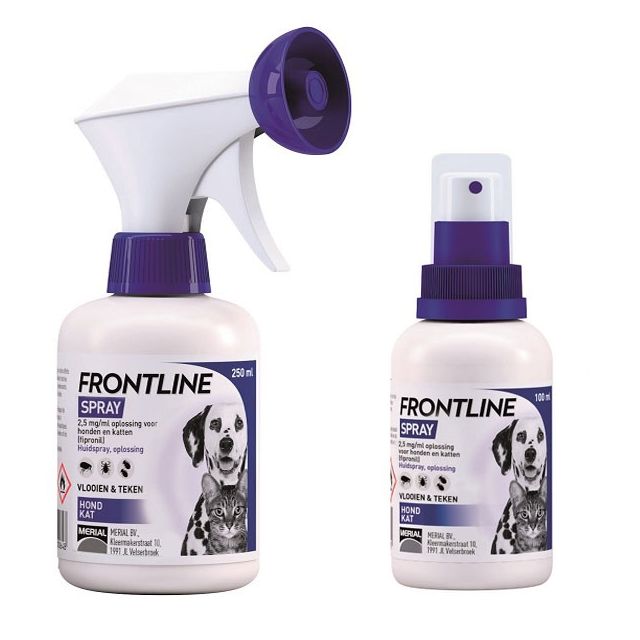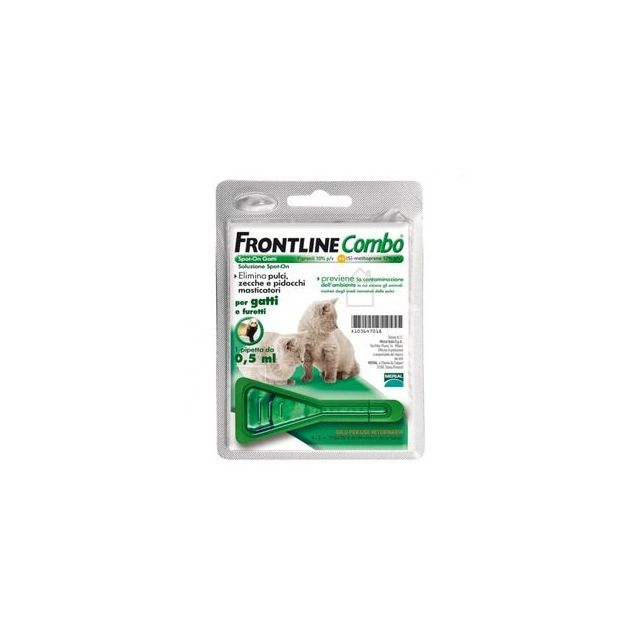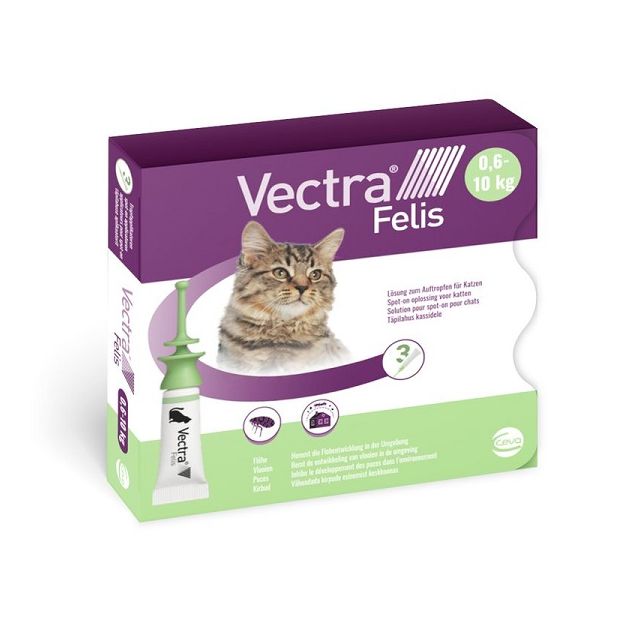Fleas in cats
Fleas are active year-round and are widespread in our environment, both indoors and outdoors. Virtually every cat comes into contact with fleas at some point. If your cat is experiencing itchiness, scratching and biting itself, or has small crusts on its back and hindquarters, this could indicate fleas. Sudden jumping, turning around, or running away "as if stung by a wasp" may also be the result of a flea bite. Fleas inject a bit of saliva into the cat's skin with their bite. In some cats, this saliva causes a severe allergic reaction, resulting in extreme itching, even from a single flea bite. This condition is known as flea allergy. Severe flea infestation in kittens can even cause anemia, as fleas feed on blood. Fleas can also be the source of a tapeworm infestation in your cat. Pharmacy4pets can help you prevent or combat fleas in your cat.
The Flea Cycle
The most common flea species in cats is the cat flea. The dog flea can also infest cats. Fleas feed on your cat's blood and lay eggs in its fur. One adult flea can lay up to 1000 eggs during its lifetime! The eggs fall out of the cat's fur and end up in the environment. The eggs hatch after one to several days. The larvae then hide in dark places, such as the crevices of your wooden floor or in the carpet. They feed on house dust, skin flakes, and feces from adult fleas. After a while, the larvae "pupate" and can survive in their protective cocoon for months. Adult fleas emerge from the cocoons in response to certain stimuli (such as warmth, vibrations) and then search for food, landing on your cat. These fleas lay eggs again, and thus the cycle continues.
How Do I Know If My Cat Has Fleas?
The best way to check if your cat has fleas is by using a flea comb. Comb the fur carefully, especially in places where fleas like to reside (the back, base of the tail, armpits, and groin). This way, you can find adult fleas or flea dirt. Fleas look like "flattened" fruit flies from the side. However, fleas do not walk or fly; they jump. Flea dirt appears as dark brown to black specks, often mistaken for sand. However, the difference is easy to determine by tapping the specks on a white piece of paper and moistening them with a drop of water, causing flea dirt to turn reddish-brown due to dried blood. Sand will remain unchanged in structure and color.
Combatting Fleas in Cats
Fleas can be very persistent, but a flea infestation can be effectively treated. However, it requires a thorough approach with the right products and application frequencies. In the case of flea allergy, your cat only needs to be bitten by one flea every few weeks to experience itching. Therefore, monthly flea treatment for your cat throughout the year is essential to keep her itch-free. Pharmacy4pets offers various treatment methods so you can choose the one that best suits your cat.
Flea Drops
Using flea drops in pipette or spot-on form is a quick and effective way to rid your cat of fleas. Advantage protects your cat from fleas for three to four weeks and can also be used to treat kittens from eight weeks of age. Vectra Felis prevents flea infestation for one month and inhibits flea reproduction by preventing the development of fleas in the cat's environment for three months. Vectra Felis can be administered to kittens weighing 600 grams or more (approximately six weeks old). Both products kill fleas quickly, are safe, and are suitable for cats with flea allergies.
Flea Collar
A treatment method that works for the longer term is the flea collar. The Seresto tick and flea collar protects your cat from ticks and fleas for up to eight months. When using the collar, contact with the skin of the active ingredients in the collar is very important. Therefore, the collar must be worn tightly enough to do its job well. The Seresto flea collar can be used for kittens from ten weeks of age.
Flea Tablets
Tablets such as Adtab kill fleas and ticks quickly, safely, and effectively. The tablets last for one month and can also be given to kittens from 8 weeks of age with a minimum weight of 500 grams.
Flea Spray
You can also treat your cat with a flea spray. The spray from Frontline can even be used on very young kittens (use the 100ml variant). The spray should be sprayed over the entire coat or distributed with a glove. Correct dosing (i.e., spraying frequently enough) is, of course, important for good efficacy. Unfortunately, resistance to fipronil, the active ingredient in Frontline, is increasingly being observed.
Natural Remedies for Fleas
Certain natural remedies, such as essential oils (e.g., citrus oil, peppermint oil, eucalyptus oil), and garlic, are believed to have flea-repellent properties. However, the effectiveness and safety of these products have not been proven by scientific research, so these products may not be registered as antiparasitic products. Some active ingredients in these natural products have even been shown to be toxic to cats. Therefore, the use of these products is not recommended.
Treating Fleas in the Home
Only 5% of fleas are on your cat. This means that up to 95% of fleas are in your environment. Treating your cat and your home simultaneously will therefore bring the flea infestation under control more quickly. The best way to tackle the environment is by thorough vacuuming and using an environmental spray (also spray the vacuum cleaner bag after vacuuming!). If you have other pets such as a dog, don't forget to treat them as well.
Note: If you have both a dog and a cat, it is important to know that cats cannot tolerate permethrin, a flea product that works well in dogs. Permethrin is, for example, found in Advantix. Permethrin poisoning in cats leads to neurological symptoms. Therefore, flea products for dogs should not be used for cats without consideration. It is even safer to choose a product with a different active ingredient than permethrin for your dog if you also have a cat, especially if they have a lot of contact. If you have any questions about fleas in your cat or about Pharmacy4Pets products, please contact us.
| Flea Treatments | Administration | Duration of Effectiveness |
| Flea Drops | Apply the drops between the shoulder blades on your cat's skin. | Up to 4 weeks |
| Flea Collar | The active ingredient spreads through the collar onto your cat's skin. | Up to 8 months |
| Flea Tablets | The flea ingests the active ingredient by biting the cat. | 1 month |
| Flea Spray | Spray the liquid onto the fur from a distance of 10 to 20 centimeters and massage it in well. | Up to 3 months* *unfortunately, many resistances |
| Natural Remedies | Effectiveness and safety not proven. | Effectiveness not proven. |

